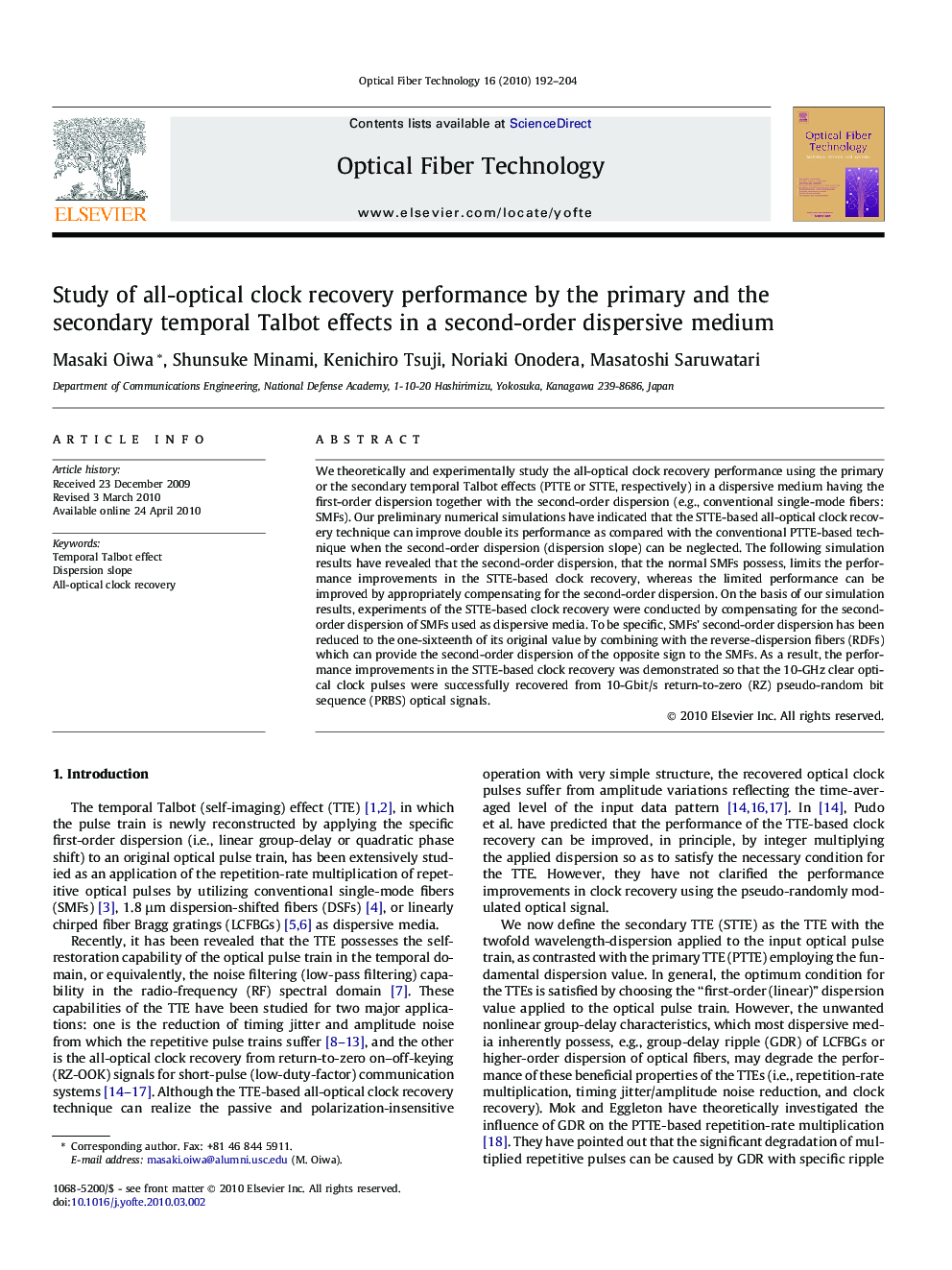| Article ID | Journal | Published Year | Pages | File Type |
|---|---|---|---|---|
| 464302 | Optical Fiber Technology | 2010 | 13 Pages |
We theoretically and experimentally study the all-optical clock recovery performance using the primary or the secondary temporal Talbot effects (PTTE or STTE, respectively) in a dispersive medium having the first-order dispersion together with the second-order dispersion (e.g., conventional single-mode fibers: SMFs). Our preliminary numerical simulations have indicated that the STTE-based all-optical clock recovery technique can improve double its performance as compared with the conventional PTTE-based technique when the second-order dispersion (dispersion slope) can be neglected. The following simulation results have revealed that the second-order dispersion, that the normal SMFs possess, limits the performance improvements in the STTE-based clock recovery, whereas the limited performance can be improved by appropriately compensating for the second-order dispersion. On the basis of our simulation results, experiments of the STTE-based clock recovery were conducted by compensating for the second-order dispersion of SMFs used as dispersive media. To be specific, SMFs’ second-order dispersion has been reduced to the one-sixteenth of its original value by combining with the reverse-dispersion fibers (RDFs) which can provide the second-order dispersion of the opposite sign to the SMFs. As a result, the performance improvements in the STTE-based clock recovery was demonstrated so that the 10-GHz clear optical clock pulses were successfully recovered from 10-Gbit/s return-to-zero (RZ) pseudo-random bit sequence (PRBS) optical signals.
